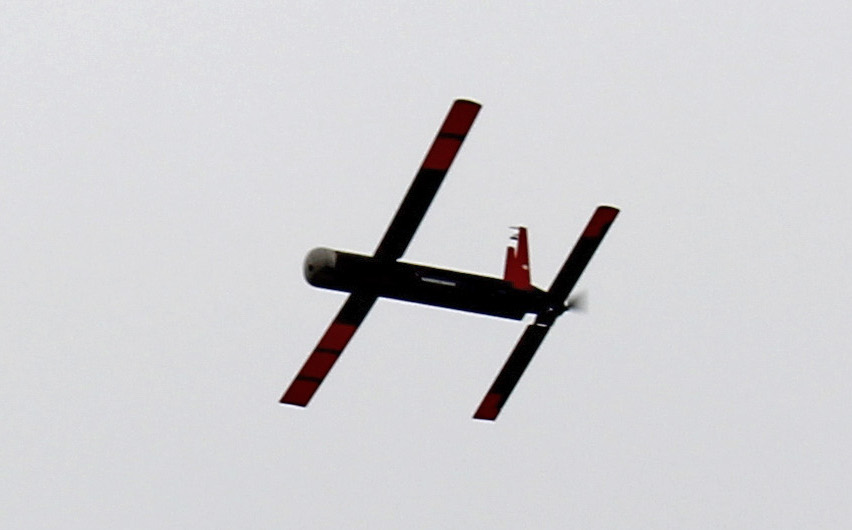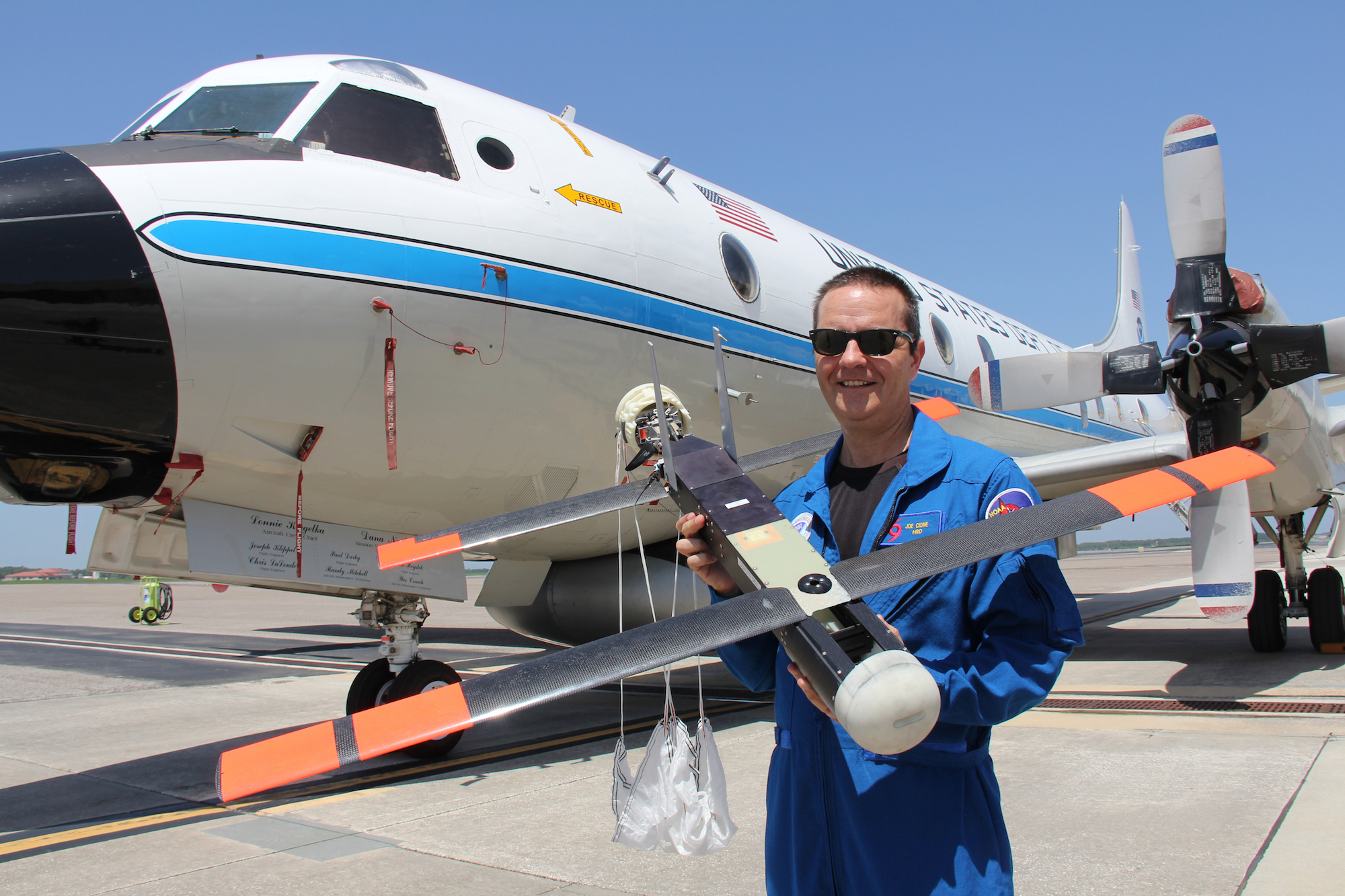By flying manned aircraft into hurricanes, researchers have discovered new means of studying tropical storms beyond what can be learned from the ground or by using satellites. Of course, with a task such as this, safety is always a priority, so what better way to get up close and personal with a hurricane than to fly an unmanned aircraft directly into the eye of the storm?
This is the objective of researchers at the National Oceanic and Atmospheric Administration (NOAA). The team has recently completed a successful test flight of their Coyote Unmanned Aircraft System that’s designed to retrieve data from the eye of the storm in order to improve hurricane forecasting.

The Coyote drone flying over Avon Park Air Force Range, Florida, on January 7, 2016. Image source: NOAA.
Developed by defense technology company, Raytheon, the Coyote is a small unmanned aircraft launched from the belly of a Lockheed WP-3D Orion (P-3), a manned aircraft equipped with instruments to take atmospheric measurements inside a hurricane. It’s also built to withstand large amounts of damage. But there are still parts of a hurricane that are even too dangerous for the WP-3D Orion, and that’s where the Coyote comes in handy.
First tested in 2014 during the Atlantic hurricane season, the Coyote, which was used at altitudes as low as 400 feet during Hurricane Edouard, allowed researchers to gather useful real-time data on the structure of the storm. The team immediately set about improving the vehicle’s capabilities for future endeavors.
This resulted in boosting the range of the aircraft, extending the distance it could fly away from the WP-3D Orion while maintaining a connection with its mothership to relay data. Its upgrades included the development and installation of a new antenna and radio, and a new infrared sensor for measuring sea surface temperature.
In its most recent round of testing, the team launched the Coyote from the WP-3D Orion over Avon Park Air Force Range in Florida to study the performance of its latest gear. It provided the NOAA researchers with real-time data on atmospheric pressure, moisture, temperature, wind speed, and direction while flying as far as 50 miles away, which is a major increase compared to the original version’s five to seven mile range.

Dr. Joe Cione, hurricane researcher, holding the Coyote in front of NOAA's WP-3D Orion aircraft. Image source: NOAA.
“NOAA is investing in unmanned aircraft and other technologies to increase weather observations designed to improve the accuracy of our hurricane forecasts,” said hurricane researcher at NOAA, Dr. Joe Cione. “This successful flight gives us additional confidence that we will be able to use this unique platform to collect critical continuous observations at altitudes in the lower part of a hurricane, an area that would otherwise be impossible to reach with manned aircraft.”
Currently the team is looking to boost the battery life of the Coyote to make for longer flight times, along with a view to making the aircraft an operational component of NOAA’s hurricane observing technologies.
Source: NOAA
Advertisement
Learn more about Electronic Products Magazine





